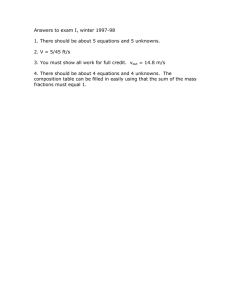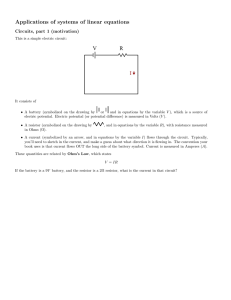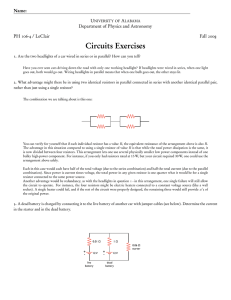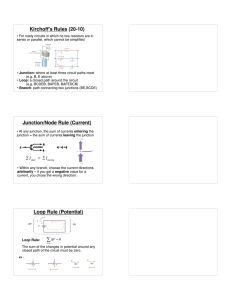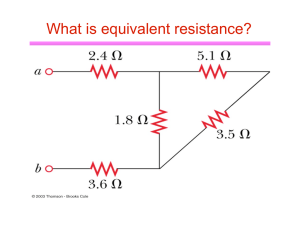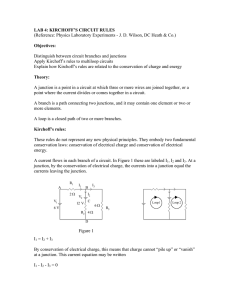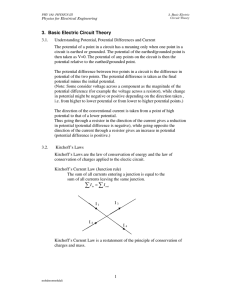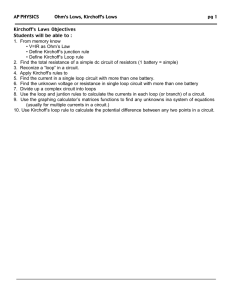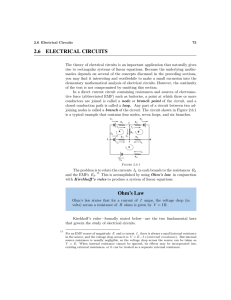How To Do Multi-Loop Circuit Problems Using Kirchoff`s Rules
advertisement
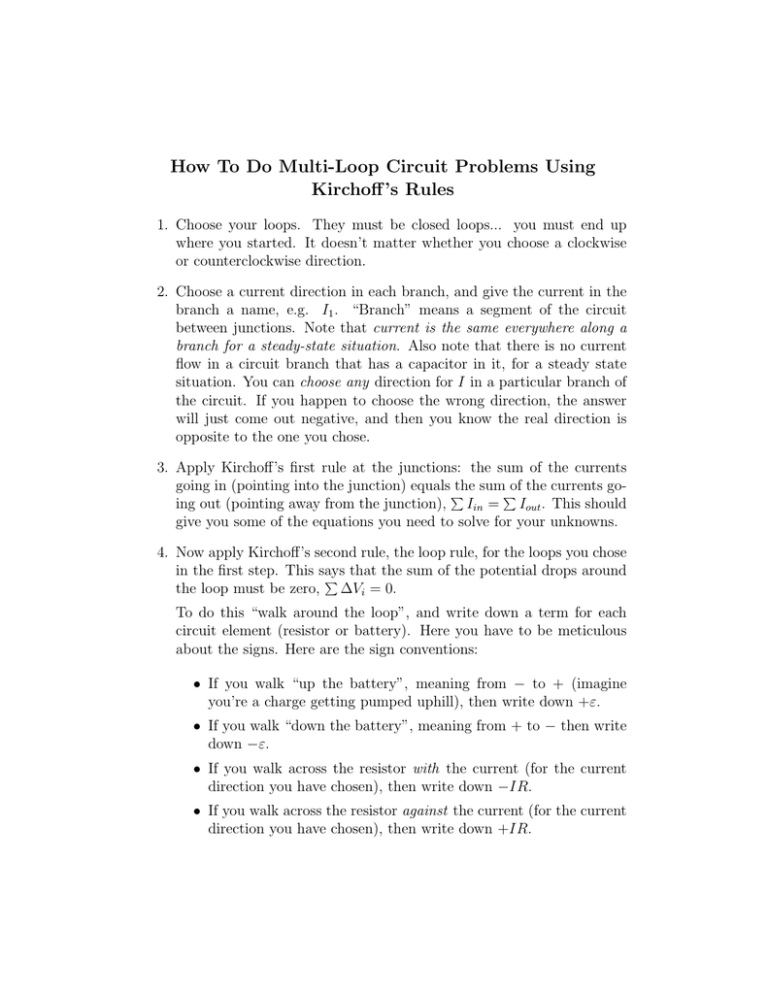
How To Do Multi-Loop Circuit Problems Using Kirchoff ’s Rules 1. Choose your loops. They must be closed loops... you must end up where you started. It doesn’t matter whether you choose a clockwise or counterclockwise direction. 2. Choose a current direction in each branch, and give the current in the branch a name, e.g. I1 . “Branch” means a segment of the circuit between junctions. Note that current is the same everywhere along a branch for a steady-state situation. Also note that there is no current flow in a circuit branch that has a capacitor in it, for a steady state situation. You can choose any direction for I in a particular branch of the circuit. If you happen to choose the wrong direction, the answer will just come out negative, and then you know the real direction is opposite to the one you chose. 3. Apply Kirchoff’s first rule at the junctions: the sum of the currents going in (pointing into the junction) equals the sum of the currents goP P ing out (pointing away from the junction), Iin = Iout . This should give you some of the equations you need to solve for your unknowns. 4. Now apply Kirchoff’s second rule, the loop rule, for the loops you chose in the first step. This says that the sum of the potential drops around P the loop must be zero, ∆Vi = 0. To do this “walk around the loop”, and write down a term for each circuit element (resistor or battery). Here you have to be meticulous about the signs. Here are the sign conventions: • If you walk “up the battery”, meaning from − to + (imagine you’re a charge getting pumped uphill), then write down +ε. • If you walk “down the battery”, meaning from + to − then write down −ε. • If you walk across the resistor with the current (for the current direction you have chosen), then write down −IR. • If you walk across the resistor against the current (for the current direction you have chosen), then write down +IR. Then set the sum of all the terms for each loop equal to zero. 5. Once you have enough equations so that you have n equations for n unknowns, solve the equations for what you want to know. Note that you may be able to write down more equations than you need. 6. If any current came out negative, then that just means that the actual current direction is opposite to the direction you chose.

